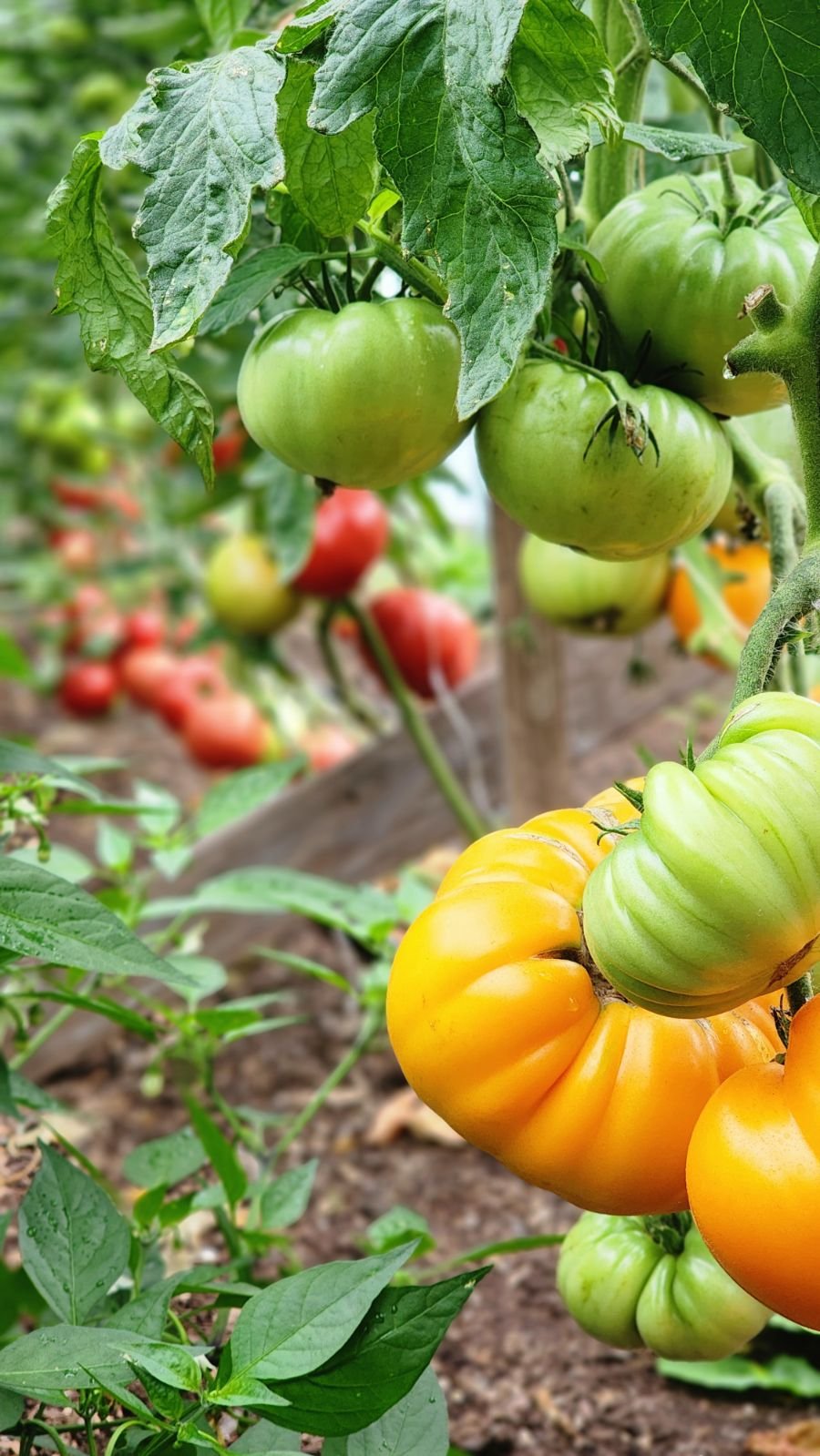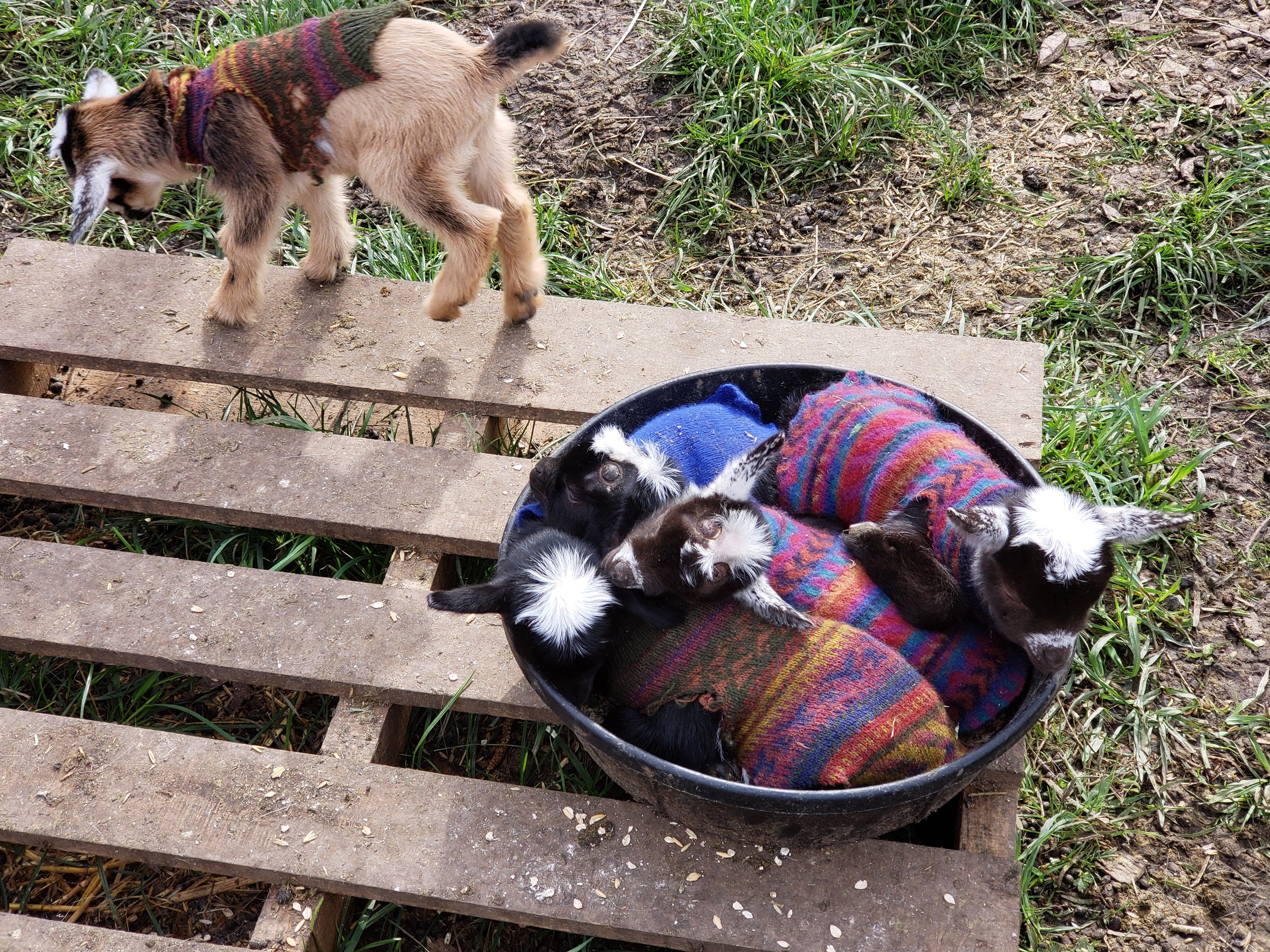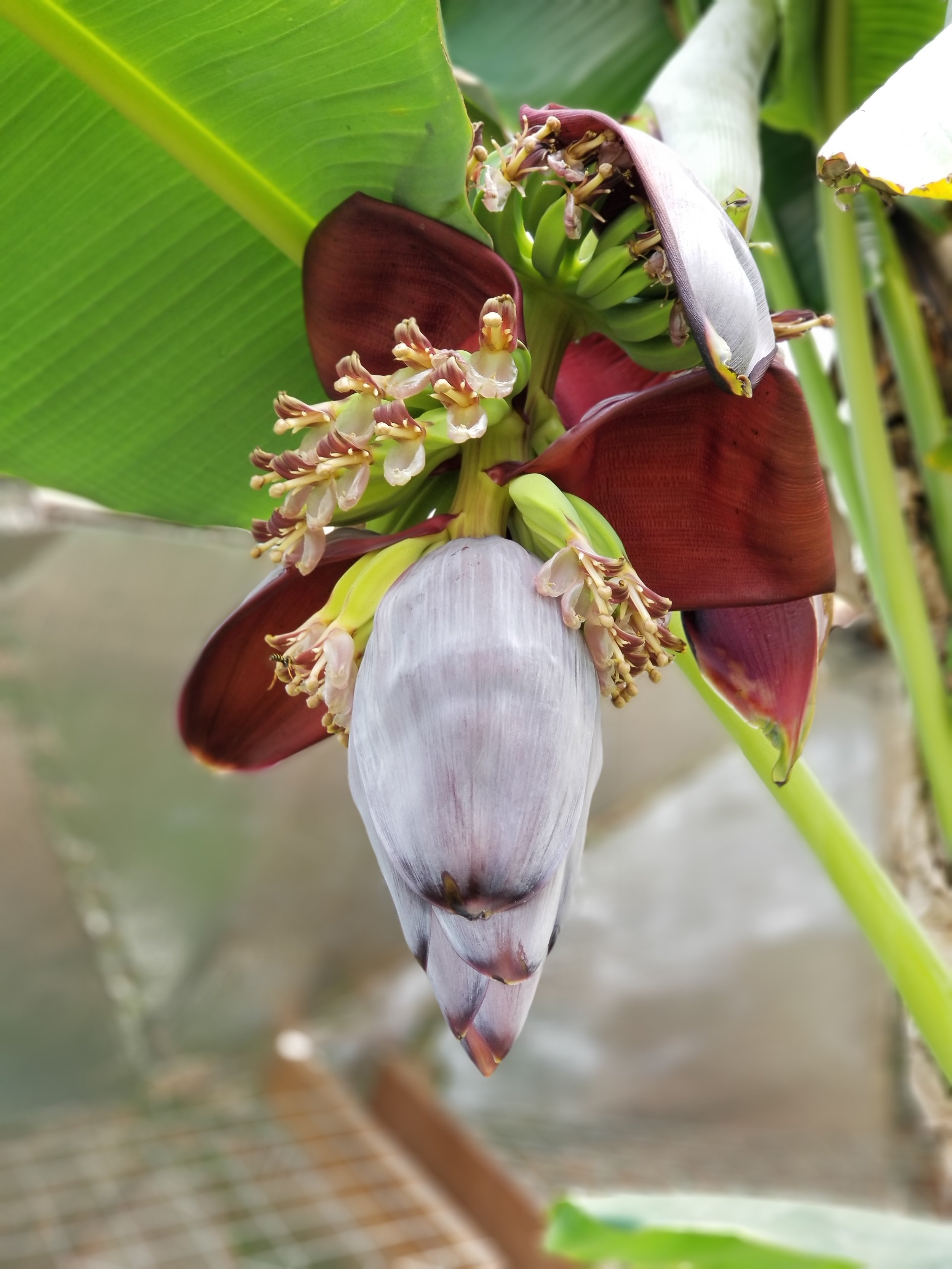About the Farm
Kodama Farm began in 2016 as a dream between siblings Ben and Grace Thompson, and our good friend Matt Montoya. Inspired by regenerative agriculture and permaculture movements, the three of us began leasing land in Chimacum, WA with very little experience, but an abundance of passion and energy.
While living out of tents and a rusty old school bus, we began transforming the raw land into a working farm with a market garden, goat pastures, an orchard, and a tropical greenhouse.
The name "Kodama" comes from the Japanese word for "Tree Spirit," a symbol from folklore where Kodama protect the forest and its natural balance. This idea has been central to our mission: to build a healthy farm ecosystem that supports both the land and our community with fresh, nutritious food. We’ve always felt a special connection to the large spruce tree that watches over the farm, and we like to think a Kodama spirit is looking out for us. Our logo, designed by Kira Mardikes, reflects that connection.
Eight years later, our friend Matt has moved on to new adventures and has started a beautiful family. He hopes to take his knowledge from Kodama to begin his own farm in the near future. Ben married Katie Rose, a talented potter and nurse who joined the farm in 2020. They welcomed a baby boy, Forest, in 2024. Grace's partner, Brandon, has been working with the farm for a few years as well. As the farm evolves, our practices and dreams remain strong.
We now own the land and are enjoying running a productive market garden. This allows us to bring fresh produce to two local farmers' markets, as well as supply a few local restaurants and grocery stores. We continue to maintain our tropical greenhouse (see more info below) and are working toward developing a healthy food forest.
Grace has also launched a successful goat milk soap business, using milk from our goats, and Katie has built a thriving pottery business based at the farm.
We have also been working with the Jefferson County Land Trust and North Olympic Salmon Coalition to protect the farm as agricultural land forever, as well as restore Chimacum Creek back to healthy salmon and wetland habitat.
Our Practices
-
At Kodama Farm, the health of the land is our primary concern. The goal of regenerative agriculture is to continually improve the quality and health of the soil through natural systems. With these systems in place, we aim to produce high quality food for the local community with an emphasis on flavor and nutrition.
The soil is the most critical component of any farm. High quality soil is rich with beneficial bacteria, fungi, worms, beetles, and hundreds of other organisms. Without these organisms, plants don’t have access to the essential nutrients and trace elements they need to thrive.
Tilling and the use of synthetic fertilizers, herbicides, and pesticides disrupt and eventually destroy the structure and life of the soil, leading to the need for greater amounts of fertilizer. These synthetic amendments leach into the water cycle, contaminate our crops, select for resistant pests, and drastically reduce biodiversity. At Kodama Farm, we value a no-till method of farming, using permanent raised beds and no pesticides, herbicides, fungicides, or synthetic fertilizers. Furthermore, due to the high water table in Beaver Valley, we do not have to rely heavily on traditional irrigation. Instead, the water table provides sufficient subterranean irrigation for the majority of the season.
-
We are in the early stages of converting a 5-acre orchard into a food forest. Read below to learn more about this concept:
A food forest is a type of agroecosystem designed to mimic a natural forest but with the intention of producing food. It’s a diverse, multi-layered garden that combines edible plants, fruits, nuts, and herbs, all growing together in a way that supports the ecosystem's health and resilience.
In a food forest, different plant species are organized in layers, similar to how a natural forest develops, which allows for a more sustainable and efficient use of space. These layers typically include:
Canopy layer: This is the tallest layer, consisting of trees that provide shade and shelter for the other plants. In a food forest, this would include fruit trees like apple or pear trees.
Understory layer: Beneath the canopy, you might find smaller trees and shrubs such as berry bushes or dwarf fruit trees.
Herbaceous layer: This includes herbs and perennial vegetables that grow close to the ground. Examples are things like rhubarb, mint, and oregano.
Ground cover layer: Low-growing plants that spread out and cover the soil, helping to retain moisture and suppress weeds. Ground covers might include strawberries, clover, or other edible plants that are also beneficial for the soil.
Root layer: Plants that grow underground, such as root vegetables (carrots, beets, etc.) or perennial plants like Jerusalem artichokes.
Vertical layer: This layer includes vines and climbing plants, such as grapes or beans, that grow upward, making use of vertical space.
A food forest promotes biodiversity, creating a habitat for pollinators, birds, and beneficial insects. It also helps to build soil health, conserve water, and reduce the need for external inputs like fertilizers or pesticides. The goal is to create a self-sustaining system where the plants, animals, and soil work together to support each other, much like a natural forest ecosystem but focused on producing food.
In essence, a food forest is a low-maintenance, high-output farming method that aligns with permaculture principles, promoting sustainability and resilience.
A few of the plants that we will be adding to the forest include persimmon, mulberry, honeyberry, medlar, autumn olive, gooseberry, hazelnut, peach, kiwi, alpine strawberry, elderberry, edible mushrooms, currants, and more.
-
Our geodesic dome greenhouse is home to many species of tropical and sub-tropical plants including lemon, lime, kumquat, blood orange, starfruit, and banana.
The greenhouse is heated passively through thermal mass and a solar powered "climate battery". An indoor pond and rock walls act as thermal mass, soaking up heat during the day, helping to maintain a constant air and soil temperature. The “Climate Battery" consists of a series of tubes that are coiled throughout the raised beds. A solar panel powers a fan that pulls hot air into the tubes during the day. At night, this air warms the soil and is released back into the dome.
If you’d like to come see our dome, please schedule a tour!


































